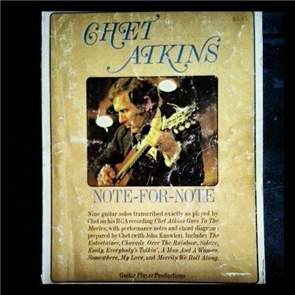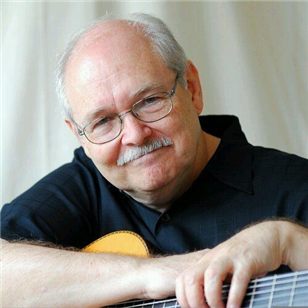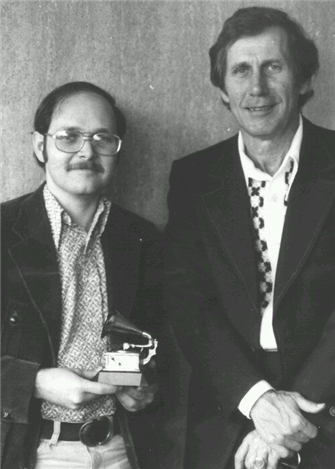Guitar by Randy Buckner
Part One: “Chet Atkins Note-for-Note”
Monday, September 9, 2019 by Randy Buckner | Method Books
When I was in middle school, I ran across an ad in Guitar Player Magazine. The advertisement was for a book of songs recorded by one of my heroes, Chet Atkins. I immediately ordered it, because the songs were transcribed from my favorite album, "Chet Atkins Goes to the Movies." Here are my thoughts on one of the most important books in my collection.
The Book
Chet Atkins Note-for-Note
By Chet Atkins and John Knowles. Copyright June 1975, by Guitar Player Productions. 72 pages. Cost of my copy: $4.95.
Cost Today
I have found examples of this book on eBay and Amazon ranging in price from $45 - $100.
What's Inside
The majority of the text was written by Knowles, with exception of the preface, which was written by Atkins. It was handwritten by Knowles, then typewritten by his wife, Becky.
Introduction
The introduction - like all the text - was originally written in first person. Knowles wrote it as if he were teaching a student how to play Atkins' music. The publishers - thinking no one knew who Knowles was - changed the text to Atkins' voice.
In the introduction, Knowles' advice to follow the score while listening to the record helped me understand the relationship between music notation and the actual performance.
Knowles suggested that when listening to the recording, listen to the melody and bass individually; identify the intro, verse, and bridge; and to listen for Atkins' articulations.
Thumb Technique
This chapter explained Atkins' thumb-work in such a way, even a self-taught middle-schooler - like me - could figure it out.
First, Knowles explained why a thumbpick was essential for the Atkins style.
He then explained the concept of a steady bass rhythm, followed by examples of Atkins' alternating bass patterns written for seven different chords. As far as I was concerned, this was the Rosetta Stone of all things Atkins.
The chapter closed with an introduction to playing the melody on top of an alternating bass. Knowles demonstrated how different melodic rhythms - quarter, half, and eighth - fit together with the bass line. Very enlightening to a beginning thumbpicker.
Anticipating the Melody
This chapter, although shorter than the rest, really summed up the Atkins style.
Knowles showed us how, while playing a song, Atkins would anticipate the melody.
In other words, picking the melody slightly ahead of the beat, thus giving Atkins' music the lilt and swing which had evaded most mortal guitarists. Again, something I had not seen in a book before buying this one.
Harmonics
This chapter tied a neat little bow around Atkins' style for me. Knowles explained not only how to play artificial harmonics, but how to combine them with a pure tone.
Because I had bought this book so early in my journey as a student, I didn't understand why others found it hard to play harmonics. Knowles explained them in such a way, it was easy to play harmonics like Atkins.
However, for Knowles, it wasn't so easy. He originally thought Atkins was playing a scale entirely of harmonics.
Knowles called Atkins, and Chet explained the technique over the phone. After a long silence, the conversation went like this: "You haven't got it yet, do you?"..."No"..."You will. Call me back when you've got it."
Knowles went to work, and figured out the technique. As we now know, Atkins would alternate a harmonic with a pure tone, creating what Knowles calls a cascade of notes.
Knowles then devised a way to write a "cue note" on the staff, to show where a harmonic occurs in the music.
My next post will be about the songs in the book.
Randy Buckner.
Hoover Music Co.
Springfield, Mo.
www.bucknerguitar.us
John Knowles: Part Three - Reflections
Sunday, September 8, 2019 by Randy Buckner | Method Books
Chet Atkins, The Person
Looking back, John Knowles remembers Chet Atkins as being a person who wanted to "get down to business."
When Atkins handed Knowles a guitar, he said, "Show me what you're working on" - meaning, "Let's get busy."
Atkins didn't want "to be on anybody's pedestal, he wanted to be a guitar player, and get to work."
But Atkins would also take time to make a five-year old feel special.
The day of the editing session, Atkins had a lunch appointment with - author and songwriter - Shel Silverstein.
When Shel arrived at Atkins' office, Knowles' son - Jay, who had been sitting quietly in Atkins' office - became very excited. Jay looked at his dad and said, "Don't you think we ought to sing one of our songs for Chet and Shel?"
Atkins and Silverstein sat back down, and listened to father and son sing. Atkins asked them to sing the song a second time, so he could record it on a portable cassette player.
Taking out a pen to write on the cassette, Atkins asked Jay the name of the song.
"The Gorilla Song," Jay said. Atkins asked if they wrote it. "Yes" Jay said. When asked if his name came first in the songwriting credits, the boy replied "yes."
Knowles said he knew Atkins was a good guy, but didn't know how deep it ran until he saw Jay being treated as a professional by his hero.
The Book
Coming from a background of classical guitar music - where students learned from printed music and teachers - Knowles "envisioned a day you could do the same with Atkins, Joe Pass, or Johnny Smith."
This led Knowles to become an early advocate for getting serious about publishing Atkins' music.
Knowles feels in the history of "how to" guitar books, "Chet Atkins Note-for-Note" was an early effort to take complex guitar music and have it "be the real thing instead of a fake approximation."
It's Affect on Guitarists
The first time Knowles heard someone play a song learned from the book, he almost went up and introduced himself. Instead, he thought, "next time...I'll do that, but this time is for me. So I kept that moment for myself. Next time...I'll ask what they learned from [the book]."
Knowles has been praised by musicians who say the book helped "decode" Atkins' music. For example, his harmonics, open string runs, and intricate scales like the one used in "Emily."
Final Thoughts
Knowles reflects, "It looked pretty nuts when I was doing the book. I was up all night transcribing, while teaching at a music store and community college during the day. I had no idea [the project] would lead where it's led."
"I just put my head down, did the work...looked up, and people all over the world wanted to know who John Knowles was because he wrote this book."
Knowles knew he was "gifted" with the opportunity to work with Atkins. He felt the obligation to "share what I had learned from that encounter."
Knowles hopes the project stands up over time. As he told me, "I felt I was given the chance to write the book I wish I could have bought when I was a kid."
Randy Buckner.
Hoover Music Co.
Springfield, Mo.
www.bucknerguitar.us
John Knowles: Part Two - Things Learned
Saturday, September 7, 2019 by Randy Buckner | Method Books
Nashville
After working on the project for about 10 weeks, Knowles - with wife, Becky, and son, Jay, - drove to Nashville. It was time to edit the transcriptions with Chet Atkins. During their meeting, Knowles learned many details about Atkins' technique.
The Meeting
As part of the editing process, Knowles learned the nine songs to play for Atkins. As Knowles played each tune, Atkins would occasionally stop him and say, "What are you doing there? I don't think I would do that."
Atkins then listened to the recording of the song, to remember what he had done in the studio. Knowles said, "Chet didn't ever play [a song] exactly like Chet [recorded] it."
Knowles originally thought Atkins' recordings were polished, practiced, and perfected before the recording light went on in the studio. Knowles learned Atkins would "rough out" a song, and record several versions while it was still in the thought process.
This led Knowles to theorize there were probably three or four takes of the songs, which were different from what's in the book. As Knowles said, "Pretty stunning isn't it?"
Asking Questions
Working with Atkins taught Knowles "to make as many guesses that might be right as I could - before asking the question - so I could hear the answer quickly." This also kept Knowles from wasting Atkins' time.
Knowles advises anyone who has access to a player to be as prepared as possible before they ask a question. The answer will then be heard when it comes time.
Knowles explained, "Don't ask questions you're not ready to hear the answer to. You won't get anything out of it except a photo for Facebook."
Technique
After Knowles spent time with Atkins, he learned there was a real depth to Atkins as a musician. It's a depth that's not apparent until you try to play like Atkins, and realize it's more difficult than he made it sound.
As a teen, Knowles developed theories about Atkins' technique, which were confirmed when they worked together.
Knowles learned to play by ear, so he closed his eyes and imagined what Atkins looked like as he played the guitar. Where he positioned his right hand, how his left hand was able to move so effortlessly, and so on.
Knowles was amazed at how close he had come to approximating Atkins' right hand position.
As for the left hand, Knowles spent a significant amount of time - at age 18 - "trying to figure out how to make my left hand float from one thing to another without getting too far from the fingerboard." Watching Atkins' left hand, Knowles thought, "That's it! That's what I was trying to do!"
A Teaching Text
During the project, Knowles learned how to write a text which would be helpful to a student. He realized assumptions could lead to things being left out, and a reader who still had questions.
Knowles said "the whole thing of putting [myself] in the reader's shoes is something I really learned a big dose of, and never let go of."
Randy Buckner.
Hoover Music Co.
Springfield, Mo.
www.bucknerguitar.us




